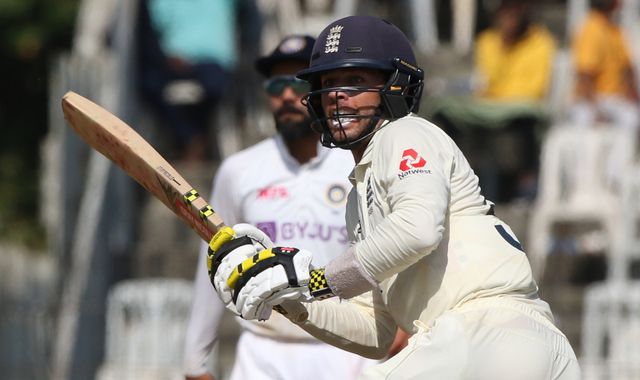Is day-night Test a new dawn for cricket? It will take years to find out, says Mike Selvey
Written by News on 17/08/2017
Will day-night Test cricket have a lasting effect? We’ll have to wait several years to find out, says Mike Selvey. In the meantime, let’s solve the mystery of the pink ball…

Given the parlous state of Test cricket in some parts of the world (the recent Tests between Sri Lanka and India were so sparsely attended that the players could have introduced themselves personally to those who were there), then there can be no quibble about any initiative to make it more accessible in terms of time and reach. Hence we now have the advent of Test matches played in the afternoon and evening, under lights where appropriate, and with a pink rather than red ball.
Whether what works in Adelaide and Brisbane, with their fine weather and clearly-defined definition between day and night, does so in Birmingham in the middle of August however, where sunset on the first day is not until 8.28pm with play due to finish at 9pm, and a significant chance of sopping dew, we shall know by this time next week. Ticket sales for the first Test against West Indies are said to be excellent, ahead of normal for Edgbaston, but this may be down to novelty value. It will take several years to glean any real empirical evidence of a lasting effect.
The drive to instigate day-night Tests was contingent first on finding an appropriate ball. Why a white ball that has been deemed suitable under lights for 40 years has not been considered is a mystery in this quarter (the traditionalist argument regarding white clothing falls flat when set against all the other changes). And if, on the other hand, the pink ball is found to last better, why is that not used in limited-overs cricket, and just the one-per-innings to bring reverse swing back into the equation?
For this match, the players will be using a Duke ball, which is said to be better than the Kookaburra that has been used elsewhere (Kookaburra dispute this, but they would do, wouldn’t they). Anyway this is relative: one England bowler who has used it says that it goes soft quickly and doesn’t swing as much as people think it might or he would like. We shall see. If indeed it does hoop around, and the weather holds, we might be in for a rapid match.
England went into the recent series against South Africa with question marks surrounding key batting positions, an opener and numbers three and five, as well as the balance of the side. Despite a highly commendable 3-1 win against a team with an enviable away record in recent years, they finished asking most of the same questions (the best all-purpose side has the balance of the last Test) and no nearer to the answers.
Persistence with Keaton Jennings at the top of the order failed to solve things: he was tortured by Vernon Philander and Morne Morkel and returns to Durham unable to say that he has not been given a fair crack. Now England must decide whether his lack of runs is down to a run of bad form or whether a faulty technique has been camouflaged in county cricket, where he has been prolific, but ruthlessly exposed at the top level. One suspects the latter.
Elizabeth Taylor and Zsa Zsa Gabor had more partners between them than Alastair Cook ("I’m a great housekeeper," said Gabor, "Every time I leave a man, I keep his house.") but only by a short head, and now, with Mark Stoneman, he has to establish another relationship. Stoneman, Cook’s 12th partner since his lengthy marriage to Andrew Strauss was dissolved in 2012, has earned a place over, say, Haseeb Hameed, for much the same reason as did Jennings, although aided by a move from Durham to Surrey.
Selectors hitherto have been noticeably reluctant to pick him, and even now it carries an air of desperation, with Hameed, a preferred option, still to regain anything like the form of last year. Old bowlers will know that one of the first things to notice in a batsman is where his defensive shots go: a left hander should be hitting to the left of mid-off and the right of midwicket, or letting the ball go. If they play any squarer a bowler is in business. An admittedly limited observation says that Stoneman comes into the latter category, eager to get bat on ball rather than exercising discretion. Again time will tell but Cook really does need to relinquish some pressure.
Tom Westley’s technique, in which he takes an obsession with the leg-side too far, has been exposed as well. As long as he continues to shovel to the on-side deliveries from off-stump and outside, he will get few balls directed anywhere near the stumps: bowlers want him to go searching. This, though, is a fault more readily rectified, and one that afflicted both Jonny Bairstow and James Taylor in their formative period. Again it shows how technical deficiencies can be hidden in county cricket before they straightened things out.
Westley’s temperament though looks to be a strong point. Dawid Malan, on the other hand, has been unable to translate his white-ball confidence to Test match cricket and unless he does something spectacular his days may be numbered, especially with Alex Hales reinventing himself as a destructive number five for Nottinghamshire.
Warwickshire and Edgbaston would love this match to mark the return of Chris Woakes, following a debilitating injury. Should he be deemed fit, and what will probably be a shortened match ought to be no more demanding than a Championship match, then it is Toby Roland-Jones who will make way. This may seem rough justice on him, given how well he has taken to Test cricket, but he will be pencilled in for the winter come what may, where the bounce he gets and his accuracy, offsets fast-medium pace (see Glenn McGrath).
Were England to get off to a two-match flier in this series and so wrap it up by the final Test at Lord’s, then there is a chance that one or both of Stuart Broad and Jimmy Anderson could be rested, although good luck to the person who has to break the news to either. A personal view is that with no international cricket for them from the start of September to the end of November a full series now would scarcely be debilitating.
However there may be an opportunity at Lord’s to give a debut to the gifted young leg-spinner Mason Crane, which would of course require a shifting of personnel and the probable omission of a batsman. Two wrist spinners, Rashid Khan of Afghanistan and Shadab Khan of Pakistan, both younger than Crane, have knocked into a cocked hat the notion spinners need time to develop.
Clearly Crane has overtaken Adil Rashid, now regarded by England, if not Yorkshire, as a white-ball specialist, as the preferred potential Test match wrist-spin option, and his success in Australia, where he played for New South Wales, is significant.
What of West Indies? The future, with a more enlightened administration, may see a more potent international team gathered which could include those now apparently disenfranchised. For now, though, it is hard to imagine a more low-key arrival of what were once visitors awaited with trepidation.
A brace of Hopes in the squad is a fair summation of their chances here, and it would require an England meltdown, or disastrous weather, for anything other than a clean sweep for Joe Root.
Watch the first Test between England and the West Indies – the first day-night Test in England – live on Sky Sports from 1pm on Sky Sports Cricket on Thursday (first ball 2pm), with over-by-over commentary and in-play video clips on our digital platforms.
(c) Sky News 2017: Is day-night Test a new dawn for cricket? It will take years to find out, says Mike Selvey





